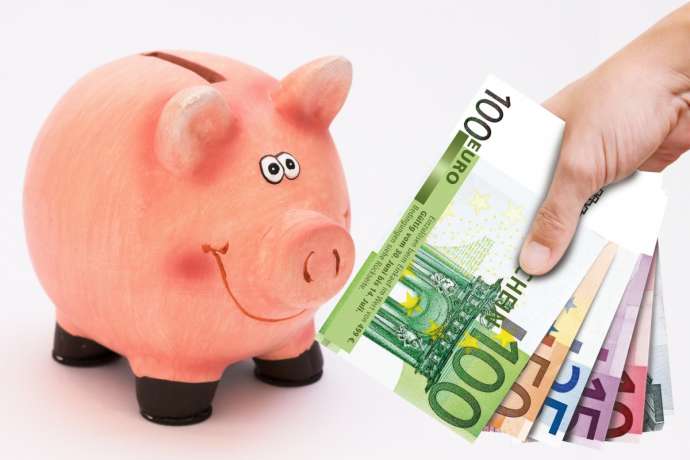STA, 31 October 2019 - Slovenians remained among the most frugal nations in the EU in the past year and positive economic trends further boosted the savings figures. Traditional forms of saving remain dominant, but investments into shares and equity are also rising. Some uncertainty has meanwhile been caused by talk of negative interest rates and lending restrictions.
Slovenia is among the 80 countries celebrating World Savings Day on 31 October. Saving has a long tradition in the country, with the first savings bank in Ljubljana dating back to 1820 and the first bank to 1900.
The frugal character of Slovenians, whose gross household saving rate was 2.6 percentage points above the EU average of 10% last year, has contributed to EUR 55.5 billion in total household savings recorded at the end of June 2019.
Almost half, or 48% of this sum is in the form or cash savings or bank deposits - the latter stood at EUR 19.6 billion at end of June, most of which was deposited at banks in Slovenia.
Total household savings increased by EUR 4.1 billion between June 2018 and June 2019. Cash and deposit savings in the period amounted to EUR 1.9 billion, which Banka Slovenije said was the highest figure for such a period since data started being collected in the current form in 2005.
Also up substantially in this period, by almost EUR 1.7 billion, were investments in shares and other forms of equity capital.
This development was spurred by high returns at the end of last year, while traditional forms of saving have become the subject of low interest rates and even talk of the possibility of introducing negative rates on deposits.
The Slovenian Consumer Association has urged people not to get discouraged, stressing the importance of saving and urging that consumers be protected against a potential introduction of negative deposit rates. It pointed out this could lead to people withdrawing their savings and destabilising the banking system.
Meanwhile, the debt levels of Slovenian households are also among the lowest in the eurozone. Total household debt amounted to EUR 14.4 billion at the end of June. Debt to banks stood at EUR 10.4 billion, EUR 6.3 billion of which was housing loans and EUR 2.7 billion consumer loans.
Standing out in this respect has been a marked rise in consumer loans, whose growth has been exceeding 10% for several years.
In August, the year-on-year growth was 11.7% and the central bank decided to pull the brake in October. It announced it was moving from recommendations to formal restrictions while also further stiffening conditions.
The restrictions, which will become effective in November and which also involve exemptions, include maximum 84-month maturity for consumer loans, down from 120 months recommended last year.
Banks will moreover for the most part have to keep loan-to-value ratios (loan payments relative to the client's annual income) to below 50% for clients with monthly income of up to twice the gross minimum wage and below 67% for those making more than that.
The same loan-to-value ratios will also become obligatory for housing loans. Remaining only a recommendation to banks is that the ratio between the value of a loan and the value of the housing assets used to insure it should not exceed 80%.
Banka Slovenije claims the measure will not affect those who are borrowing in line with their capabilities, while the central bank's Deputy Governor Primož Dolenc has also put in question claims this would affect bank profits and seriously reduce purchasing power.
"We've conducted quite a number of studies ... and one of the minuses is a one-off effect on the profitability of banks. However, if we have healthy credit growth and keep bank portfolios clear of potentially problematic claims, this will have positive effects in the long run," Dolenc said, suggesting a similar logic applied to consumer spending.






